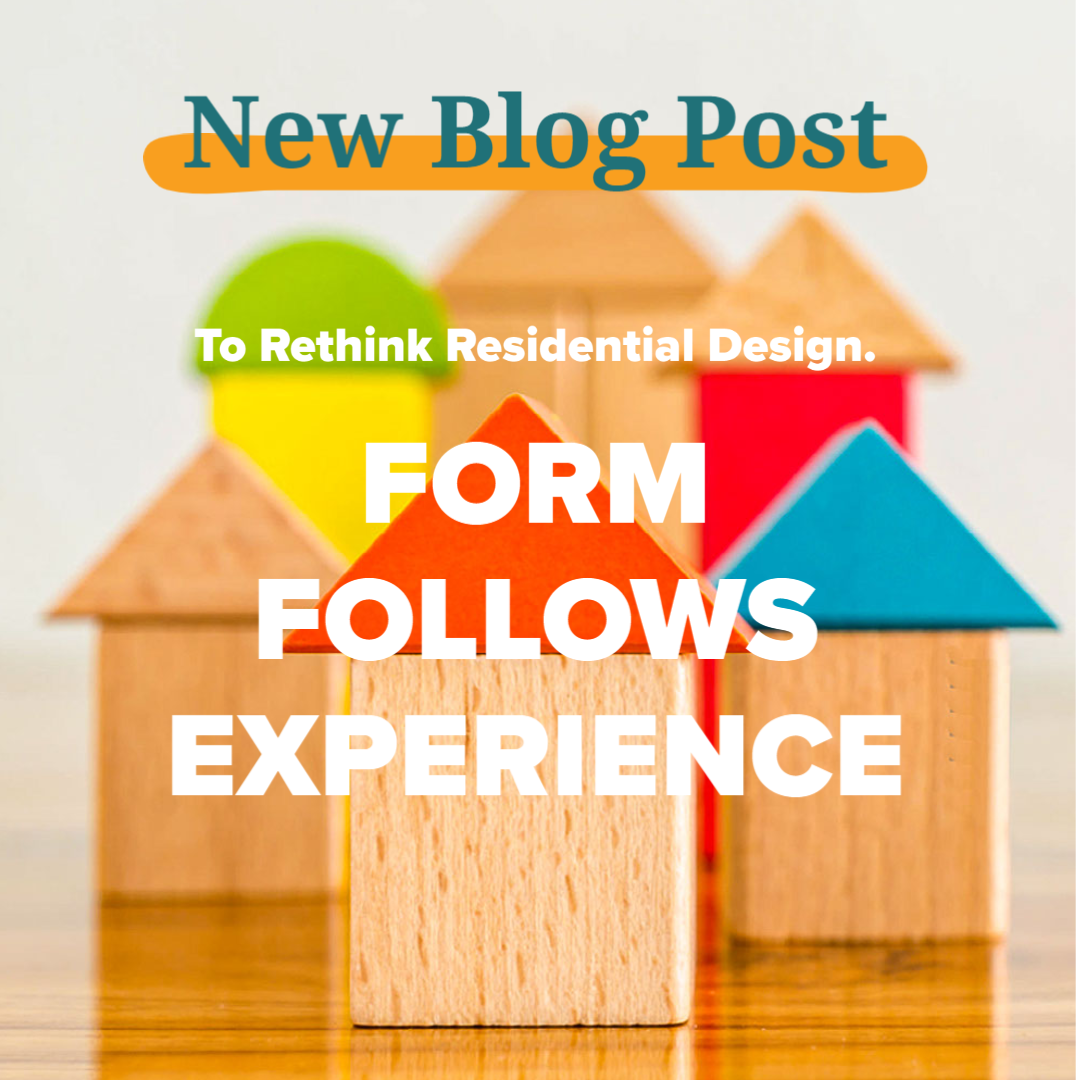
24 Jun Rethinking Residences
Do you have a morning routine? Or an evening routine? Do you count the days till the weekend when you can relax on your balcony or garden? Do you schedule to host dinner and lunches with family and friends?
I will go out on a limb and guess that ALL of you do at least one of the above, if not all. Why? Because our lives revolve around time just as much as movement through our environments. Life is not static. So why should our homes be designed without considering time and movement through space? Without understanding how our surroundings stimulate our bodies and senses at different times of the day?
I want to stress how important the fourth dimension of time is when rethinking residential design for renovations or ground-up. Incorporating time as a design parameter will ensure the building and interiors envisioned will create a liveable and nurturing home, not just a house, for the present and for the future. It is the foundation of an experience-driven design process.
So how do we design a unique and sustainable home, formed by experience, that addresses a client’s wish list and that checks off their Pinterest saves too? On top of solving siting concerns, programmatic adjacencies, codes, guidelines, engineering demands, budget constraints, and deadlines? Our studio took many years, many clients, and many homes to develop our strategy.
But before I explain our studio’s design process, I want to share the story of one of the most famous houses of the 20th century: The Villa Savoye. Designed by Le Corbusier in 1928 and completed in 1931. It was intended as a second home, an urban retreat, in the outskirts of Paris.
It was also designed as a “machine for living” to be approached via automobile and experienced through walking the “architectural promenade” of its interior ramps. Thus, the villa most succinctly summed up Corbusier’s five points of architecture. But machines are good at doing specific tasks, like how a car gets you from point A to B. And they almost always become obsolete, often quickly. And this was the case for Villa Savoye.
As soon as it was completed, it started to leak because Corbusier eliminated downspouts and overhangs. Due to the oversized ribbon windows, there was too much heat loss in the winter, and too much heat gain in the summer. The pilotis were structurally weak and caused cracks on the walls. And Mrs. Savoye repeatedly complained to Corbusier and threatened legal action. Plus, because of the poor conditions inside the house, the Savoye’s sickly son got even more ill. And they quickly stopped using the villa. This house made the family physically sick and mentally unhappy. The freedom given to Le Corbusier resulted in a house that was governed more by his manifesto than by any requirements, ideas, lifestyle, or values that the family had.
Can you believe that this 20th-century icon of modern architecture was uninhabitable? And worse, Le Corbusier and the Savoye ended their relationship on terrible terms. Corbusier’s strategy and process is an antithesis to our studio’s core purpose: To co-create so that the imagined can be experienced, meaningfully and memorably. With this purpose in mind, we approach each project by designing in moments! And we embrace the collaborative endeavor of building a home with the client, engineers, contractors, suppliers, and everyone on the team. This purpose is the foundation of our approach, which is: Human focused, Research-based, and Experience-driven.
This strategy is how we design with the dimension of time and movement. We apply this approach to all our projects, and it is essential to our process. When we start a project, our first step is to develop an understanding of the values and lifestyle of the client. We have deep-dive meetings and discussions. We send a detailed questionnaire. We ask them what they like and dislike right now about their current home, what they dream about their new or renovated home. We ask them to walk us through their day – AM to PM for all family members. We ask them what their plans are in 10 years. How big their family will grow. How long they plan to live in their home. And many other questions to gave empathy to their needs, wants, aspirations, habits, and values.
We do this to appreciate what season in life they are in to plan our design strategy to suit the current and future seasons. In addition, we do this to learn how their behavior and their everyday experiences are affected by time and movement in space. Next, we identify touchpoints in our designs to engage with as they move forward through space and in time. Touchpoints are highlights in the experience journey – full of sounds, sights, smells, and textures. These touchpoints are where moments can be experienced – memorably and meaningfully, in a home that is alive and supports the family’s daily and future lives.
In designing for renovations, we take the same approach. However, at smaller scales and with limited budgets, it is even more important to consider solutions ranging from the NOW, NEAR, and FAR timelines of those that will inhabit the home. In 2020 and this 2021, we were fixated on our interior environments because we were all inside. The increase of DIY projects, home improvement, renovations, increased ground-up home construction, home furnishing, online shopping, Pinterest & IG scrolling reflect this.
The pandemic exposed the Inadequacies of our homes. As a result, redesigning and renovating have taken on an increased interest. We want to find a new life for unused spaces. We need adaptable, multifunctional rooms. We crave a connection to nature and biophilic solutions. We welcome multi-generational living. We need safe and sanitized areas for our loved ones. We seek environments for comfortable living, working, and playing. We want to repair, replace, recycle, re-envision, and redesign our private spaces into places that give us value and impact. We have come to all recognize that feeling-at-Home in your house is as essential to well-being as nutrition, exercise, and social connectivity to family and friends.
Though redesigning and renovating existing space is more challenging than a new build because of the added constraints of limited space, existing conditions; budget; and timeline. There is an excellent opportunity to be innovative and creative with design solutions within those parameters.
So as we navigate the future beyond the pandemic and the future of residences. I want to leave this idea with you: please always consider time and movement when envisioning your new home or refreshing your existing residence. Understand how you use spaces, indoor and outdoor, throughout the day and year, and how this could change in the future. With this knowledge, you can provide crucial information to your interior designers and architects that will guide their design process and impact the overall design of your home profoundly. It will ensure that the design process will be driven by experience (your experience!). Your vision for a new home, perfectly suited to your values and lifestyle, will be realized for years and possibly generations to come.


